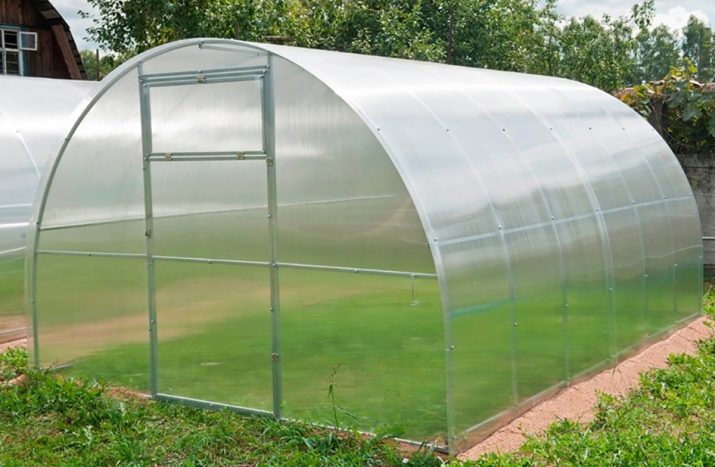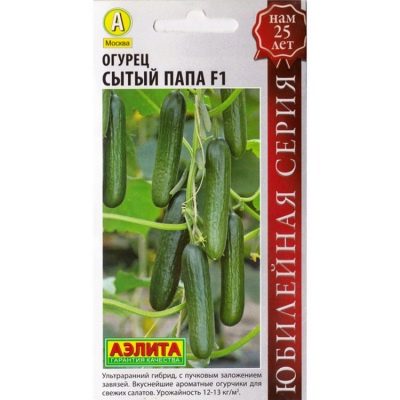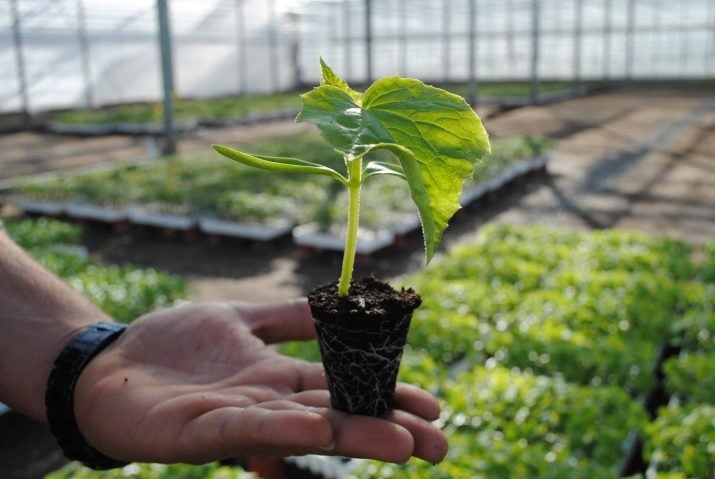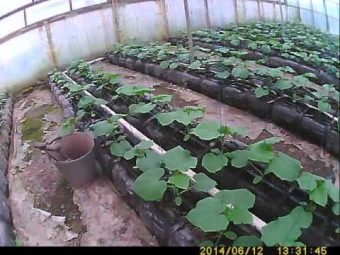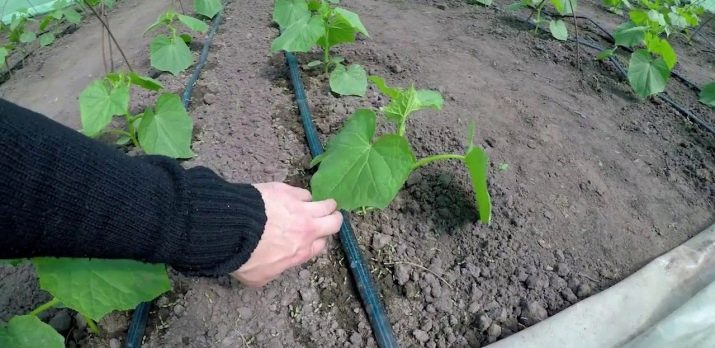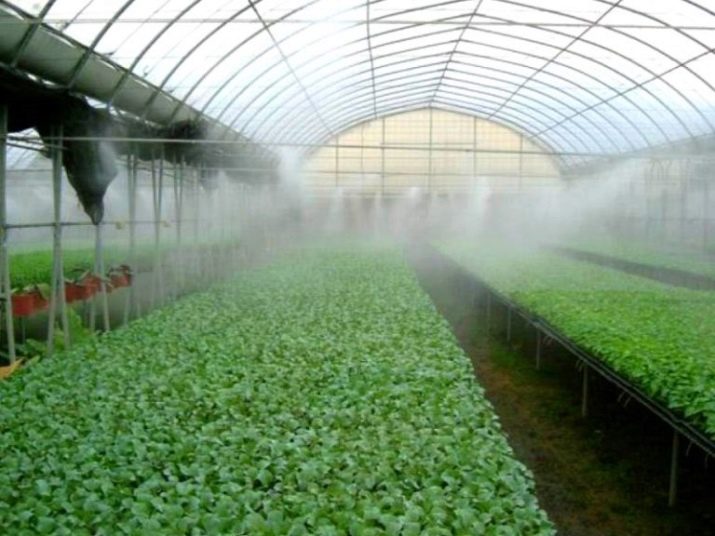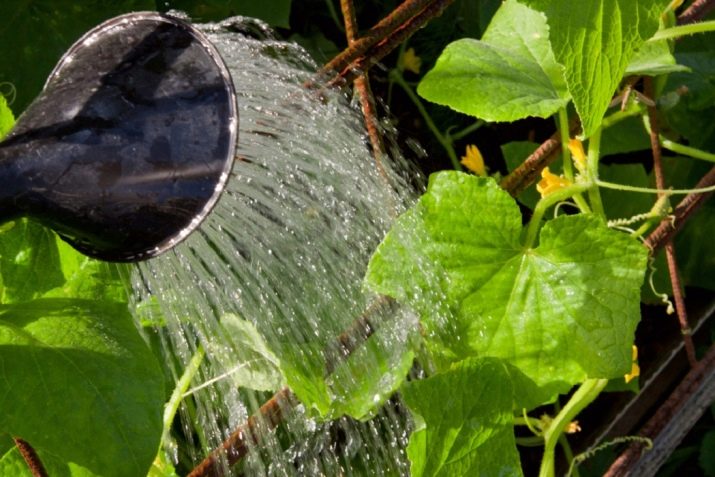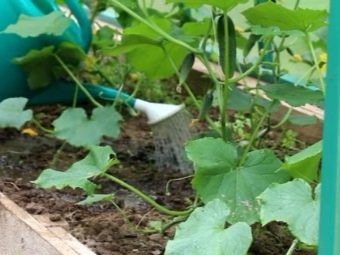Features of planting and growing cucumbers in the greenhouse
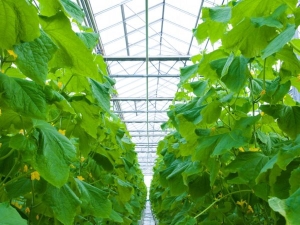
Cucumbers are one of the most popular vegetable crops.The unique qualities of this product make it possible to plant it in greenhouses made of polycarbonate materials. Such premises allow you to create ideal conditions that are perfectly suited for a tasty and abundant harvest.
Among the distinctive advantages of polycarbonate greenhouses one can distinguish a high level of light permeability, minimal thermal conductivity and excellent inertness to the influence of chemical factors. That is why such designs are in great demand among summer residents, who thanks to them get a record amount of harvest.
With the help of such honeycomb structures, a unique microclimate is created, thanks to which fast and high-quality fruit growth occurs. However, this process must be approached with all the responsibility, because not only the quality of the crop, but also the opportunity to receive as such depends on it. Only with the right approach can everything be adjusted in such a way that the fruits grow healthy and of high quality.
A distinctive feature of polycarbonate is that it is a polymeric material, which today almost completely rid the market of the need to use glass or plastic. Most people mistakenly believe that greenhouses are only needed for growing in cold weather conditions, but this opinion is wrong, because the designs show themselves well even in summer. Among the distinctive advantages that can boast a greenhouse made of polycarbonate during the cultivation of cucumbers, it should be noted.
- High light permeability, which was achieved due to the delay of too bright sunlight. Because of this, you can not worry that the leaves of plants will receive burns or other problems due to the active influence of the rays.
- Unique properties in the field of thermal insulation, which managed to get due to the huge number of vacuum mini-cameras present in polycarbonate sheets.
- Minimum weight that allows you to install even the largest structures on soils that are not able to withstand heavy loads. The main difference between such structures is that for their installation does not need to build a foundation and other similar structures.
- Durability. In the process of producing such structures, high-quality materials are used, thanks to which they retain their attractiveness, reliability and strength properties for a long time. In addition, greenhouses protect cucumbers from the constant impact of strong winds, which often cause complete crop damage.
Variety selection
In order to ensure a good and high yield, you need to carefully select the most suitable variety. In the case of closed ground, self-pollinated and parthenocarpic cultivars are best suited. The main difference between both species is that they do not need bees for pollination, which is of paramount importance during the cultivation of such a culture inside a greenhouse structure. The main feature of the self-pollinated variants is that their pollination occurs due to the fact that pollen from one plant is transferred to another. As for parthenocarpic variants, then the ovary occurs without any pollination, which is quite effective during planting cucumber culture in closed conditions.
In addition, today, hybrid variants that are characterized by their ability to withstand a variety of diseases, infectious diseases and viruses are in rather great demand. The main advantages of hybrid varieties are that they can cope with almost any external conditions, which has a positive impact on the quantity of the crop and its quality.
The only drawback of hybrid cucumbers is that these vegetables do not pass on their qualities through seeds, so gardeners are forced to buy them every year. Another quite important advantage of such varieties is the duration of fruiting, which is several months. With proper and properly organized care, each plant produces more than 5 fruits, which has an effective impact on the total amount of yield obtained at the output.
Hybrid cucumbers can boast of unique taste characteristics, attractiveness and resistance to transportation, which is of no small importance if you want to sell products. Unique properties allow you to use these vegetables in natural form, and in the form of preservation for the winter.
Among the most popular and reputable varieties for planting in greenhouse structures should be the following.
- "Zyatek F1". Extremely sought-after parthenocarpic hybrid variety, a distinctive feature of which is the ability to withstand a variety of diseases. The advantage of this plant is that the first fruits can be seen after a month. These hybrid cucumbers are characterized by a cylindrical shape and do not grow too large, therefore, are considered an ideal solution for preservation. Fruits can be used both in natural and in the form of salting.
- "Everyone is the envy of F1." Despite the fact that this hybrid variety appeared relatively recently, it has already managed to win the hearts and favor of millions of summer residents around the world. The main advantage of this variety is its enormous yield and unique arrangement of fruits, thanks to which a lot of cucumbers can be obtained from one plant. When planting in greenhouse conditions, these varieties can develop almost all year round, providing the owner with a delicious and high-quality crop. The distinction of cucumber culture of this variety is the presence of thin skin, due to which they are considered to be an ideal preservation solution.
- "Fed dad F1". This variety is recommended to grow for people who need salad types of cucumbers. Cucumbers are long and smooth, making it an excellent way to eat as a salad. But for the preservation of the winter like cucumbers are not suitable, as they differ in a cylindrical shape. They can easily be used in the process of cooking lecho and other similar products. Like other hybrid varieties, this variety boasts precocity and ability to withstand a variety of diseases. It can survive in almost any conditions, even including lack of moisture and cold weather.
- "Ekol F1". One of the newest varieties, which is considered the most successful parthenocarpic hybrid. A distinctive feature of this cucumber is that it gives the first fruits a month after planting. Zelentsy turn out rather equal, possess a cylindrical form and quite large dimensions.
- "Chinese cold-resistant F1". This variety is considered one of the most popular types of sweet cucumbers. It is suitable exclusively for growing in a closed structure, since it is much easier to tie it up here. The main feature of this vegetable crop is the presence of powerful lashes, which grow extremely quickly. As for the fruits themselves, they can reach 50 cm in length and are distinguished by huge forms.
Soil and Seed Preparation
In order for the crop to be as high-quality and plentiful as possible, it is necessary to do everything possible to correctly select the seeds, as well as to properly prepare the soil. Cucumbers, which are grown in polycarbonate greenhouses, love not sour soil, which has a large supply of nutrients.It should be extremely careful with the use of nitrogen fertilizers, which in copious amounts can cause serious damage to the crop or completely destroy it.
Before using in a greenhouse, garden soil should be disinfected as thoroughly as possible in order to get rid of any pathogenic bacteria and microorganisms.
The fact is that they are the main source of diseases, which may affect the health of the plant and its taste properties. The soil for planting cucumbers in a closed atmosphere can be prepared independently or bought in specialized stores. The second option is preferable, but if there is not enough money, you can prepare the soil on your own. To do this, you can use the garden ground and add a little peat to it.
In addition, garden land can be created from ordinary soil, humus and sawdust. The most effective and popular among summer residents is the seedling method of planting cucumber culture in polycarbonate greenhouses. The fact is that thanks to this it is possible to harvest much faster, especially in the winter season. On average, using this method it is possible to collect cucumbers a month after planting.
The procedure for planting and caring for a cucumber in greenhouse conditions is as follows.
- you need to find small reusable containers, conduct tangential disinfection and make sure that there are no harmful microorganisms;
- plant a few seeds to a depth of more than 2 cm in a moist soil;
- control the temperature in the greenhouse, which should be above 25 degrees Celsius;
- cover with a thick film until the emergence of shoots, not forgetting to ventilate the tank from time to time;
- leave the youngest shoot, and the weakest cut off.
In order for everything to pass at the highest level and without any problems, it is necessary to constantly monitor the lighting. Ideally, crops should receive direct sunlight 12 hours a day. In addition, the seedlings should be constantly watered with heated water. This is an extremely important point, because the use of cold water can completely destroy the future harvest.
And now it's time to carry out the preparatory work with the seedlings. It must be ready for planting in the garden when the stem reaches 15 cm. It is at this moment that real leaves appear on the bushes and the roots are strong enough to be transplanted into the ground. Here it is necessary to be extremely attentive, because the overgrown seedlings cope with new conditions much worse and usually do not survive even in the greenhouse.
Sowing methods
In order for the cucumbers planted in the greenhouse to give the required level of harvest, it is not enough just to choose the right variety and correctly prepare. To do this, it is also necessary to provide the most suitable microclimate and choose the right landing pattern. Thanks to her, you can get a high-quality and high yield of tasty fruits. It should be noted that the distance between the bushes for each variety is different, and this point should be taken into account when selecting the most suitable for your conditions cucumber species.
Most people, wanting to get a huge harvest, plant seedlings tightly, but the ripe fruits at the same time in the future interfere with each other and as a result of this can not grow. In addition, close-fitting leaves almost do not let the sun's rays to the roots, because of which the fruits are obtained with bitterness and small size. It can also lead to increased humidity, as a result of which plants often develop fungal diseases.
In addition, cucumbers and flowers often rot because of excess moisture. Vegetables planted closely together also have a negative effect on their roots, which are not able to develop normally in such conditions.A distinctive feature of the root system of cucumbers is that it grows exclusively in the horizontal direction and, if there are certain obstacles in the way, the growth completely stops.
Tangled roots begin to absorb a huge amount of moisture in order to somehow influence the situation, however, as a result of this, the soil dries quickly and plants start to die. Another disadvantage of closely growing plants is that it is almost impossible to properly care for them. Summer resident should always check each sheet, monitor the formation of additional and ensure that cucumbers do not appear.
However, to do this in conditions where a huge amount of fruit has been planted on the bed is almost impossible. Some grow cucumbers in such conditions in order to collect pickles or gherkins, but for this you need to thin the leaves on a regular basis, which is almost impossible under the conditions of the wrong choice of planting scheme.
In the process of choosing the most optimal scheme, it is necessary to follow the only rule: the distance between the rows should be left so that they feel comfortable. Of course, in greenhouses, every centimeter of space is usually counted, because the owner wants to get as much harvest as possible from the room used.
If you rarely plant cucumbers, it will not allow you to fully use the area of the greenhouse in full. In other words, if you plant this vegetable crop far from each other, then the crop will not be able to boast a large number of fruits and the minimum number of cucumbers will be collected from each square meter. In the process of choosing the most appropriate distance between seedlings, the advice of the breeders who have produced this type of product must be taken into account.
The fact is that the intervals between rows are influenced by such factors as the size of the leaves, the size of the fruit itself, the length of the lashes and other features of the selected cucumber variety. If you are guided by universal principles and rules, then up to 6 cucumber seedlings per m2 can be planted on one bed.
Of course, cucumbers can be planted as seeds in the ground, but the most effective way of growing in a greenhouse is planting through seedlings. This is the way to get the greatest amount of harvest. Often used seedlings in small-sized peat tanks, which can boast strong roots. To do this, simply take a small container and cut them, then plant a sprout in the hole.
Careful attention must be paid to the characteristics of the variety used. The ideal option is considered to be planting indoors only those options that are used for closed beds. If the greenhouse construction is used only in hot weather and is constantly open, you can choose varieties that are pollinated by insects, otherwise it is better to choose other options. Regardless of the variety, all cucumbers want direct sunlight to fall on them.Therefore, this moment must be taken into account in the process of selecting a place for the greenhouse construction and planting cucumbers in the garden.
Experts advise to have the beds in the latitudinal direction, that is, from west to east. It is under these conditions that cucumber cultures will receive the maximum amount of direct sunlight. A well-thought-out selection of the planting scheme makes it possible to get a high-quality and tasty harvest without any problems. The ideal option is the creation of narrow beds, which allow you to easily approach any plant, tie up, get rid of diseased leaves, or process crops. In addition, these beds are much more efficiently ventilated and receive more direct sunlight, and it is also easier to harvest ready-made crops from them.
Due to the narrow beds in the presence of diseased leaves, you can immediately notice them and save the plant until they are completely destroyed. Such beds are extremely easy to handle with the help of various pesticides and specialized chemical solutions, if pests have settled on them.
Among the most popular planting schemes can be identified single-line, two-line and chess schemes. A distinctive feature of the two-line version is that sprouts are planted opposite each other. Detailed scheme is considered the best option for varieties that can not boast of large leaves and fruits. The main advantage of such a fit is that it greatly simplifies the process of removing whiskers and other necessary elements.
In the process of creating beds based on a two-line scheme, it is necessary to control the height of the soil layer of 20 centimeters or more, and the width of the beds cannot be less than 80 cm. Efficiency is considered to be a chess scheme, due to which plants do not interfere with each other to receive direct sunlight.
The holes are made in such a way that they are not located opposite each other, but in a checkerboard form. In other words, each previous plant is ahead of the next half step.
The chess scheme is considered to be the ideal solution for self-pollinated hybrid varieties, which are distinguished by rather large leaves and fruits. The main advantage of such a planting scheme is that vegetables receive the greatest amount of direct sunlight, which has a direct impact on the quantity of the crop and its quality.
In addition, the use of such a method makes it possible to rationally use every millimeter of space and thereby obtain a greater yield per square meter. A single-line scheme can be used for certain hybrid varieties that cannot be planted in several rows.
A distinctive feature of these beds is that they are characterized by a minimum width and length. However, it is precisely due to such dimensions that the distance between cultures can be reduced. The main drawback of the one-line cucumber planting scheme is that it does not allow saving room space in the room, since there is a need to leave enough space between the beds so that you can move freely.
That is why such a method of planting is resorted to only in the case of the use of hybrid varieties, which have a high yield, and thus can compensate for the remaining disadvantages. In the process of planting seeds, it is best to make the wells wide enough so that the seeds can fit there. If the seeds are already germinated, they must be planted root deep.
You can plant peppers, eggplants and zucchini next to cucumbers, but in no case are watermelons or other melons.
Care
To obtain the most abundant and tasty harvest, it is necessary to pay close attention to caring for it. It is not enough just to plant a vegetable crop, and it will be necessary to provide adequate conditions for growth. For a good harvest, it is necessary to carry out constant watering, garter and other similar activities.
Careful attention should be paid precisely in the spring, when cucumbers are extremely vulnerable, and any diseases can affect them. It is necessary to timely produce their watering, fertilizing and other activities.
Watering
In order for the crop of cucumbers to be abundant, it is necessary to provide the plant with constant access to moisture. It is necessary to do everything possible to prevent overdrying of the soil, since, because of this, the culture will not receive the necessary nutrients and trace elements for growth.
In addition, you need to monitor that there is no overwetting, as this may adversely affect the state of the vegetable crop. Irrigation should be carried out at a moderate pace, constantly monitoring the condition of the soil and the cucumbers themselves. While the cucumbers have not begun to bloom, it is necessary to follow the instructions for watering clearly and in no case should there be an overabundance of moisture. Most gardeners recommend using about 5 liters of water per 1 square meter. Due to this, the plants will not be able to produce leaves too quickly, but the ovaries will become more active.
If cucumbers are still increasing a huge amount of leaves, then you can slightly reduce the rate of watering to slow down the pace of leaf production.
For this it is enough to skip watering once. Careful attention to watering should be paid during the formation of the first ovaries, as well as during the fruiting period. If cucumbers feel a lack of moisture at the moment, the harvest may be completely lost. That is why it is imperative to water cucumbers from the moment they have risen to the end of fruiting every few days. As for the amount of water, it is best to follow the principle of about 10 liters of water per square meter.
The exact number depends on the weather outside: if it is too hot, then you need to use more water and vice versa. As the plant has flowered, irrigation should be done every other day. However, even in such cases, it turns out that cucumber leaves will begin to tie up. If this is observed, then it is necessary to proceed immediately to additional irrigation in order to ensure that the plant lacks moisture. In no case can not use cold water for irrigation.
The ideal solution is warm water. The fact is that the use of cool water can cause infection of the root system, which will lose its immunity to the effects of harmful microorganisms.
Also, in no case should you irrigate the cucumber crop at the root, otherwise this can cause significant damage to the crop or reduce the quality of the fruit. If the watering was done carelessly and the roots got too much moisture, then you need to immediately fill the soil from above.
In order for the vegetables to have an attractive appearance after the growing season, and not to be prone to infection, you need to make sure that the soil is always dry. This method makes it possible to provide protection against rotting of the roots, which is considered a common problem in the process of planting cucumbers in greenhouse conditions. It should be borne in mind that if the weather is dry and hot enough, then the air temperature in the greenhouse can be extremely high even with constant ventilation.
Professional summer residents advise spraying greenhouses from the outside of the glass with chalk, which is diluted with water, in a low concentration, which helps to cope with high temperatures. This measure makes it possible to significantly reduce the temperature in the room, and also has a positive effect on the level of air humidity in the greenhouse.
It is also important to remember that watering should be done only with warm water. The ideal option is considered if the water temperature is the same as the temperature of the soil itself. In this way, you can prevent damage to the root hairs, which in the future may cause damage to the crop. Most people do not know at what time of day they should water their plants. There is no definitive answer to this question, however experts advise irrigation in the morning or late in the evening.
If the temperature is too high outside, then it is also necessary to sprinkle with irrigation.
Top dressing
In order for the crop to grow without problems and have an attractive appearance, it needs to constantly provide various microelements and top dressing.It is worth remembering that at the very beginning of the growing season, this vegetable crop perfectly assimilates nitrogen, therefore it is necessary to use nitrogen fertilizers. After the lashes begin to grow, they cannot cope without a sufficient amount of potassium, therefore it is better to give preference to just such feeding.
But after the shoots begin to appear, the need to obtain nitrogen minerals again arises. The maximum nutritional requirements, vitamins and trace elements cucumbers in the greenhouse are experiencing during fruiting. It is extremely important to carry out in this case both root and foliar dressings, using for this purpose all types of fertilizers. Most summer residents make the same mistake when choosing between mineral and organic fertilizers, but the ideal solution is to use both options at the same time.
In order for cucumbers to differ in large sizes, it is necessary to produce additional foliar feeding with the help of specialized preparations, among which Zircon takes pride of place. In addition, in the modern market for sale you can find specialized fertilizers for cucumbers that are grown in greenhouse conditions. In the process of selecting a top-dressing, it is imperative to take into account the variety of this vegetable crop, which affects the need for certain trace elements.
Top dressing for cucumbers can be both natural and artificial. An excellent source of natural fertilizing is herbal tea, water extract from mullein, or fertilizer from chicken manure.
If the budget allows, it is better to use special fertilizers, which are sold in specialized stores. They are more effective and allow for a short period of time to provide the plant with all the necessary trace elements.
Shrub formation
The formation of cucumbers includes the following procedures:
- tying up;
- getting rid of unnecessary leaflets;
- topping;
- getting rid of side shoots.
To correctly form a bush, you need to pay attention to the variety of vegetables. Today, there are unique hybrid varieties on the market that do not need to form a bush. For such plants, it is important to remove the lower leaves that touch the ground, and other work can not be done.
In addition, you can use climbing cucumbers, which dissolve too many lashes. The pinching also plays an important role in the formation of the bush. If it is produced incorrectly, this may cause the scrub to be sterile.
Diseases and pests
If cucumbers do not grow well or do not bloom, then they may have been affected by a particular disease or pest. The fight against it is an integral part of the cultivation of any crops, including cucumbers.
One of the most common pests is the spider mite, which is considered the most dangerous pest. The main sign of the appearance of such a pest is the presence of a thin web and small punctures, which lead to yellowing of the leaves or their complete drying. You can fight this pest in the following ways:
- maintaining the soil in the required condition;
- disposal of debris or plant residues;
- disposal of sulfur briquettes.
Among the most common diseases are the following.
- Gray rot. It is possible to detect this disease by gray spots, and some fluffy bloom appears on the fruits. You can cope with this disease with the help of ash. In addition, the ideal solution is considered to be constantly airing the plants. If the disease begins to develop, then you need to instantly get rid of the affected parts.
- Mealy dew. Appears on the stems and looks like a white spot. Affected parts can also be coated with ash or sprayed with a mullein solution.
- Plain mosaic. A distinctive feature of this disease is that dark green spots appear on the leaves of cucumbers. Infection can multiply through weeds or by using infected seeds. That is why for this process it is recommended to use only treated seeds for planting. Every diseased plant should be destroyed immediately.
It should be noted that the cultivation of cucumbers in greenhouse conditions requires careful removal of weeds over the entire area. In addition, you must constantly take special measures, among them - the installation of glue traps. Rectangles, painted in bright colors and pre-lubricated with rosin, are used to attract dangerous insects. You can also add petroleum jelly or castor oil to the composition, which attracts almost any insects.
To prevent and protect against a number of diseases and pests, water can be sprayed onto the plant. This method is especially effective when washing the lower parts of sheets.
Another pest is the whitefly, which also feeds on cucumber juice and can cause serious harm to the fruit. A great way to get rid of the problem is planting tobacco nearby, which attracts the whitefly.
Among the diseases that affect cucumber cultures, gray and white rot can be noted. These fungal diseases develop due to the large amount of moisture in the room or due to overly tight planting. It is much easier to carry out prevention and prevent the occurrence of these diseases than to cure cucumber cultures from them.
Thus, growing cucumbers in a polycarbonate greenhouse is a complex process that needs to be approached responsibly. Processing should be carried out in a timely manner, and sowing should be done only with proven seeds that are not infected with infections, so no problems will arise with them in the future. Only by clearly following all the procedures and subtleties, you can get a high-quality and tasty crop of cucumbers.
To learn how to grow cucumbers in a greenhouse, see the next video.



